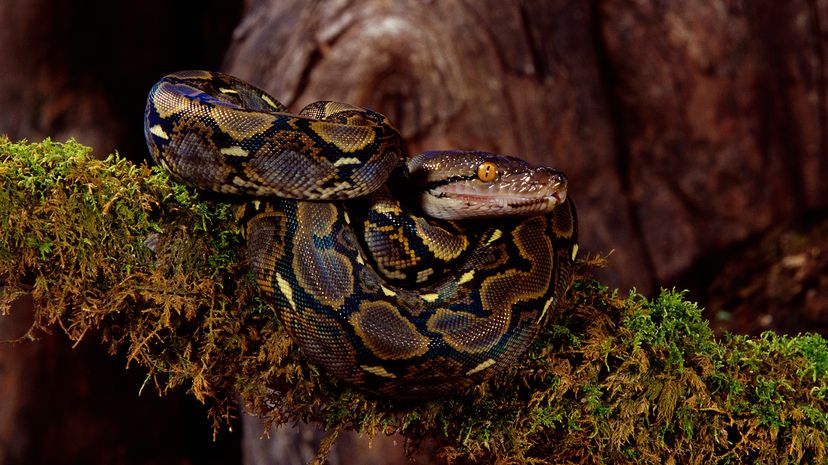Pythons, members of the genus Python, are renowned for their distinctive physical and behavioral characteristics. Physically, they are among the largest snakes in the world.
Muscular Bodies
Their bodies are muscular and adept at constricting, a method they use to subdue prey by coiling tightly and suffocating it. This physical prowess is complemented by their unique skin patterns and colors, which provide excellent camouflage in their natural habitats.
Built-in Hunting Tools
One of the snake's most remarkable feeding adaptations is its highly flexible jaws. Equipped with backward-facing teeth, these jaws allow pythons to swallow prey significantly larger than their heads. This enables them to tackle a range of prey sizes, from small rodents to larger mammals and birds.
Pythons also possess specialized heat-sensing pits near their mouths, allowing them to detect thermal radiation from warm-blooded animals. This sensory adaptation is beneficial for nocturnal hunting and other low-light conditions, compensating for their generally limited vision.
Dual Lung Capacity
These snakes also have two lungs, a trait considered primitive or ancestral among snakes. This feature is a callback to their evolutionary origins from lizard-like reptiles, which typically have two functioning lungs.
Over the course of snake evolution, many species adapted to having a single lung to streamline their bodies for burrowing or other specialized living conditions. This adaptation allows for a more elongated and flexible body, which is advantageous in navigating narrow spaces or moving across various terrains.
The right lung is typically longer and more developed in pythons, while the left lung is often smaller or sometimes even rudimentary.
Lifespan
In terms of lifespan, pythons are long-lived compared to many other reptiles. In the wild, they can live for over 20 years; in captivity, their lifespan can extend even further, often exceeding two decades.
Their relatively long lifespan, combined with a generally calm disposition, has made certain species, like the ball python, popular in the pet trade.
